Categories
Subjects
Authors
Artists
Venues
Locations
Calendar
Filter
Done
April 30, 2024 – Review
Xiyadie’s “Butterfly Dream”
Stephanie Bailey
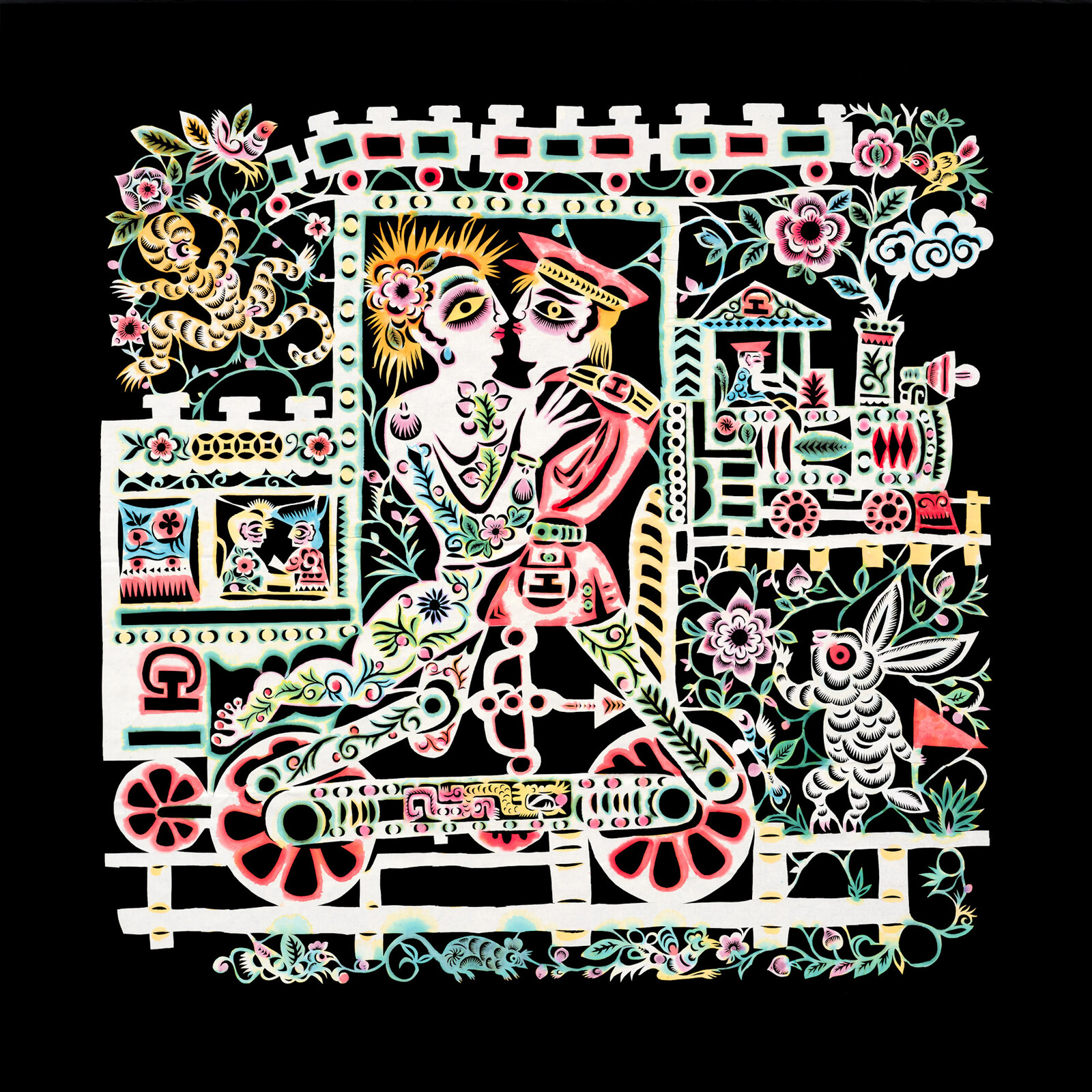
There’s a mythological aura to Xiyadie, who learned the ancient matrilineal folk art of paper-cutting from his mother while growing up in China’s Shaanxi province. The artist’s name means “Siberian Butterfly,” an insect known for its beauty and resilience. He gave it to himself in 2010, when the Beijing LGBT Center invited him to show his work to the public for the first time, five years after he moved to the Chinese capital as a migrant worker to support his family. Before that 2010 show, the artist’s paper-cuts, created using Xuan paper and luminously pigmented with natural dyes, were private portals into a closeted world: an entanglement of diaristic records of clandestine gay affairs and fantasies of living a freely queer life. Since then, he has exhibited internationally (notably in the curated exhibition at this year’s Venice Biennale) but less so domestically, making this exhibition in Hong Kong—the artist’s largest to date—an important milestone.
Among the earliest papercuts in “Butterfly Dream” is Train (1985–86), which recounts one of Xiyadie’s first sexual encounters with a train attendant while en route to Xi’an. Mounted on black velvet, a large, square image plane is defined by a central train carriage in which an …
February 12, 2024 – Review
Kwan Sheung Chi’s “Not retrospective”
Stephanie Bailey

Everything about Kwan Sheung Chi feels elusive, even when he’s telling you about himself. Take the artist’s press release for “Not retrospective,” which includes “less [sic] than 40 recent and previous sculptures, photographs and videos.” A biography cites two solo shows Kwan staged in 2002, one year before he graduated from the Chinese University of Hong Kong and one year after his joint funeral-as-exhibition with artist Chow Chun Fai, when they burned their art. The first is “A Retrospective of Kwan Sheung Chi” at Hong Kong’s 1a space, for which there is scant online record. The second is “Kwan Sheung Chi Touring Series Exhibitions,” described as ten “major” exhibitions at different Hong Kong venues that apparently involved Kwan photographing himself in each site.
Kwan has long resisted the market’s tendency to commodify artists by leaning into commodification as a systematic process that resonates with the conceptual grid—an approach that couches critical gestures within layers of satire. Divided into three sections, “Not retrospective” stages this sleight of hand. It begins with a small white cube crudely built from wooden boards like a stage set, where a trio of pennant banners strung up at the entrance made from dust jackets for Marx’s …
January 11, 2024 – Review
“Green Snake: women-centred ecologies”
Stephanie Bailey

Of all the works in this gathering of cosmological and ecological perspectives, one is anchored directly to the exhibition title. Two moon gates open up the wooden frame enclosing Candice Lin’s Kiss under the tail (all works 2023 unless otherwise stated), where floorspace padded with tatami mats hosts ceramic cats, one with a house for a head, and an indigo-dyed carpet whose patterning replicates a nineteenth-century diagram of a castration by a western missionary who studied eunuchs in China. These gates, and the transformational space they envelope, reference a central location in Tsui Hark’s 1993 movie, Green Snake, a retelling of an ancient Chinese folktale about two female snake demons who endeavored to become human. In the film, the single-minded White Snake pursues the love of a studious male, while the free-wheeling, shapeshifting Green Snake tries to understand the desire that drives her centuries-long companion to her doom. In the end, Green Snake rejects the human world with its apocalyptically heteronormative devotions and questionably immutable morals, realizing she had known love as an affirmation of life all along. So she returns to the water, or rather to nature; an idea that runs through this show.
Projected onto a massive wall …
July 7, 2023 – Review
Jes Fan’s “Sites of Wounding: Chapter 1”
Wong Binghao

In one corner of Jes Fan’s latest exhibition is a glass globe that fits snugly into a receptacle resembling a half-opened, upright clam’s shell. Titled Left and right knee, grafted (all works 2023) and installed on a ledge in the curve of the staircase that leads down into the gallery, the sculpture’s treasure is only visible from above; from below, only its undulating, opal façade can be seen. The body parts and procedure referenced in the artwork’s title are hardly, if at all, discernible in the artwork’s form; an obtuseness compounded by its relatively inaccessible position in the exhibition space. Like the “pearl” it protects, this artwork reveals its meaning only in glimpses.
Indeed, even the exhibition’s figurative sources are hidden in plain sight: all of these seemingly abstract sculptures are cast from knees, chests, and torsos. Arranged in a vertical line, Left and right knees, three times is composed of six wall-mounted aqua resin basins, each approximately the same size and shape and spaced evenly apart. Despite the mathematical connotations of its title, the sculpture resembles an outlandish cascading fountain adorned with esoteric insignia. Fan mimicked an oyster shell’s palette by sanding various pigments—yellows, pinks, browns, and blues—onto aqua …
July 6, 2021 – Review
“Portals, Stories, and Other Journeys”
Aaina Bhargava
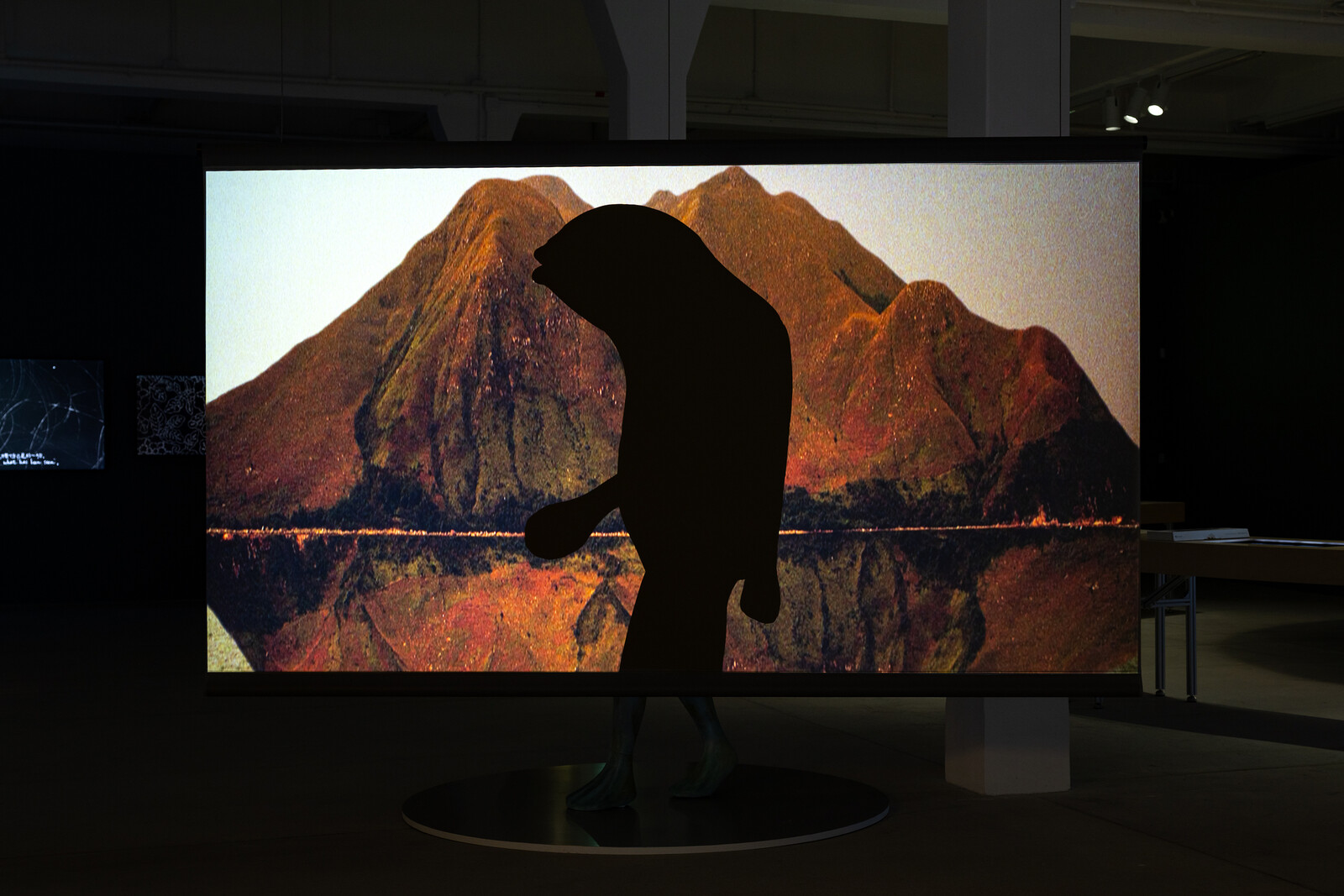
Hong Kong’s art history has traditionally been overshadowed by its status as a trading post for galleries and institutions showcasing internationally established artists. “Portals, Stories, and Other Journeys,” an exhibition organized by Asia Art Archive (AAA), brings different stories to light by exploring what archives are and can be.
Claire Hsu and Johnson Chang founded AAA in Hong Kong in 2000, with the objective of documenting existing and developing Asian art histories from Asian perspectives. Their action anticipated wider movements advocating the reclaiming of historical narratives, which have in recent years dominated discourses engulfing the art world and cultural sphere. Now home to one of the most valuable and comprehensive collections of materials pertaining to recent and contemporary Asian art, AAA demonstrates how crucial archives are to local art ecosystems, as well as to artists’ practices. By making the process of documentation accessible, they make the unseen seen.
Curated by Michelle Wong, a former researcher at AAA, this exhibition stems from a project initiated by the institution in 2014, delving into the vast personal archives of the late self-taught Hong Kong artist Ha Bik Chuen (1925–2009). Ha’s collection of printed materials including exhibition catalogues, art books, and photographs—known as his “thinking …
January 15, 2020 – Feature
Hong Kong Roundup
Travis Diehl
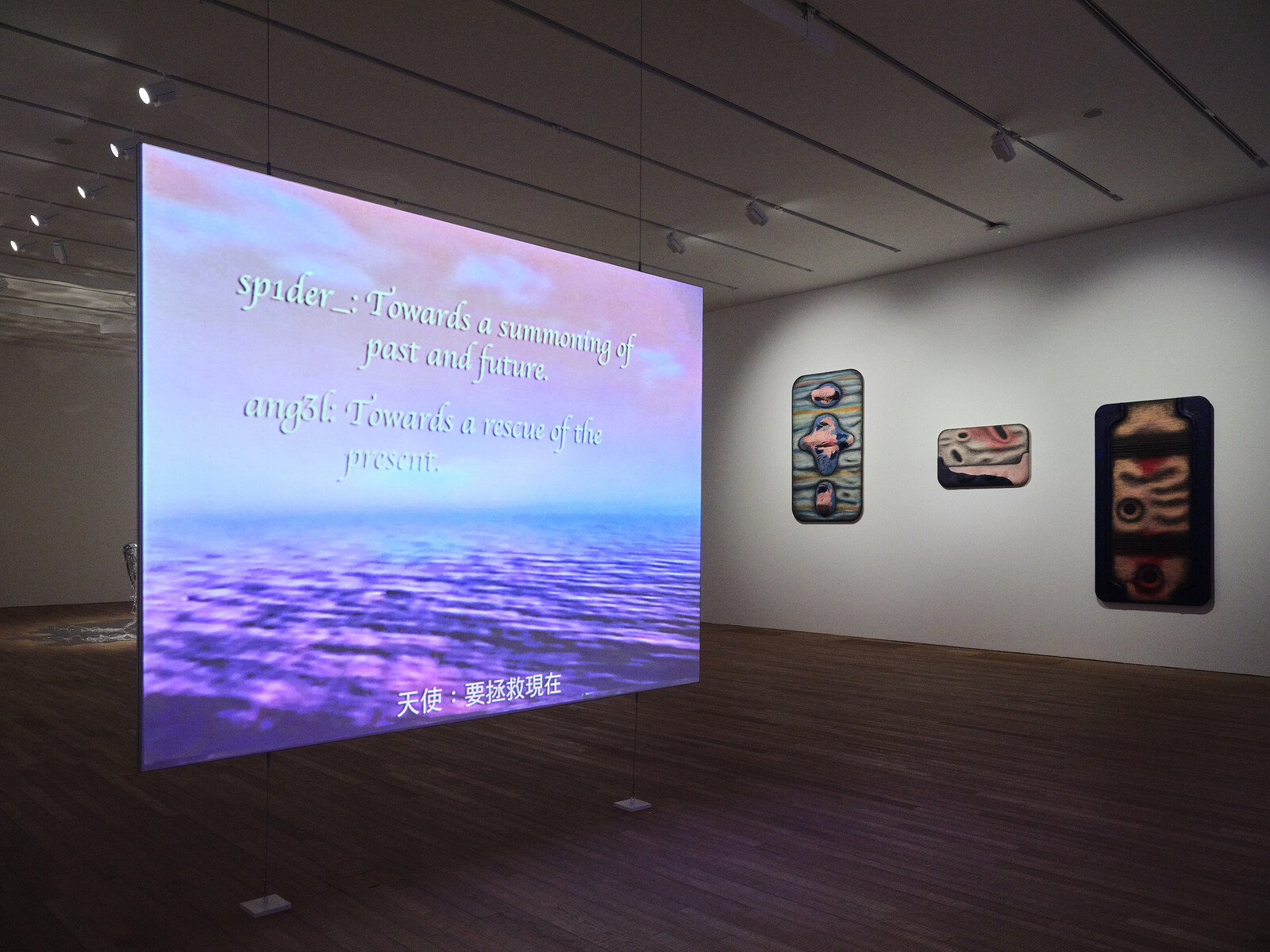
A citywide rally on December 8, 2019, marked six months of pro-democracy protests in Hong Kong. 800,000 people attended—a tenth of the total population. When I arrived the following weekend, the streets were quiet. I wasn’t there for the protests—I was there to see art. Yet I couldn’t escape the feeling that we were, as Allan Sekula wrote of the 1999 Seattle protests, “waiting for teargas”—in the lull, anticipating the moment when revolution and counter-revolution show their true selves. Meanwhile, the Hong Kong police were thinking about art, too. On December 12, they posted a parody of Maurizo Cattelan’s Comedian sculpture (2019) to social media; in their version, instead of a banana, a teargas canister is duct-taped to the wall. This is possibly the most pitch-perfect, frank response from the government so far: lobbing riot grenades is a day job for some, but only an artwork can express the underlying depths of official apathy. The Hong Kong “banana” joined the graffiti along the roadways in Central, slogans like “thx president trump / make hk great again” and “je me révolte, donc je suis”: messages meant, on some level, for outsiders like me.
The art scene, too, seemed to be steeling …
June 6, 2019 – Review
Cici Wu’s “Unfinished Return”
Leo Goldsmith
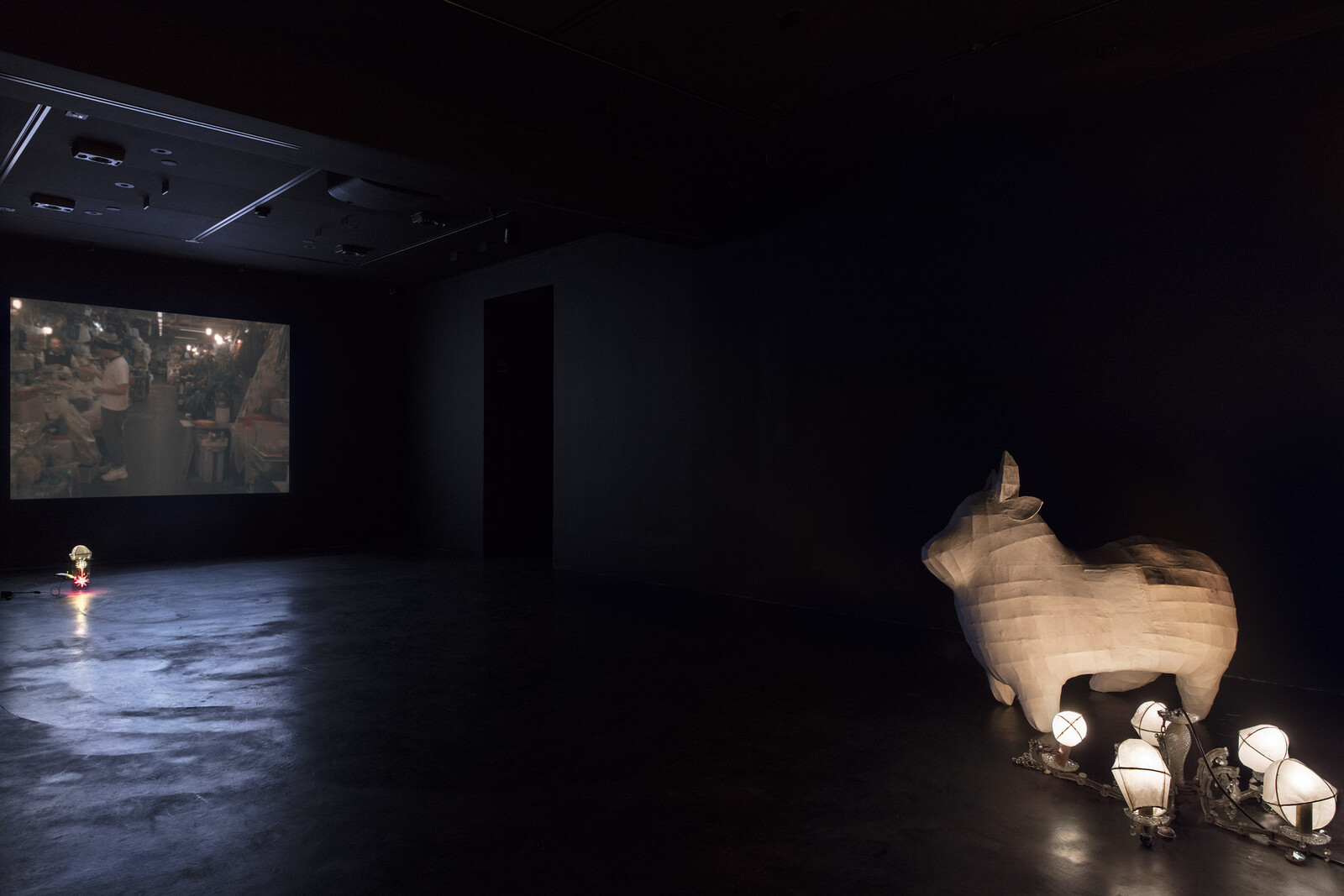
The “unfinished return” in the title of New York–based artist Cici Wu’s first solo exhibition in Hong Kong refers to a legendary incident in the city’s recent history. In August 2000, Yu Man Hon, a 15-year-old autistic boy, was separated from his mother in an MTR metro station in Kowloon. Somehow, the young man made it to a checkpoint at Hong Kong’s border with Shenzhen, where he was able to cross into Mainland Chinawithout identity documents. Once on the other side of the border, unable to make his way back to Hong Kong, Yu disappeared, never to be found.
For many, the story of Yu resonated as an allegory of Hong Kong’s relations with Mainland China in the early days following the handover of the former British colony to the People’s Republic of China in 1997. There is indeed the shocking indifference of the authorities, especially in dealing with the most vulnerable. But there is also the sense of loss, of blurred national and cultural identities, and of the border as a liminal zone where one’s very body might dissolve into evanescence. Revisiting the story some 20 years later, Wu’s exhibition ponders the cultural resonance of Yu’s ambiguous fate, even offering …
April 9, 2019 – Feature
Hong Kong Roundup
Marcus Yee
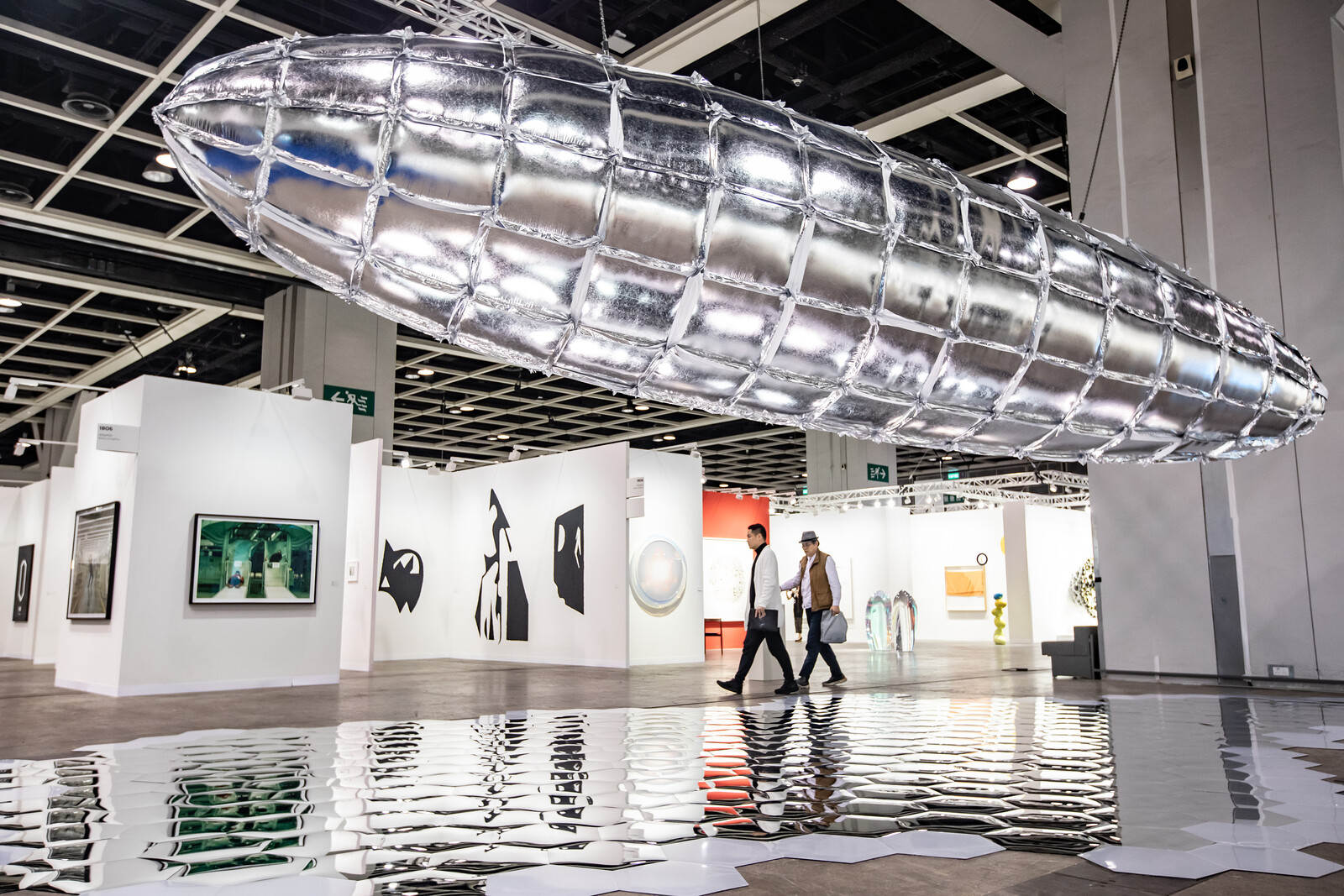
Hong Kong floats, at least according to Xi Xi’s short story, “The Floating City.” In this sensitive portrait of Hong Kong, the city has stabilized into myth, while its inhabitants have turned into a group of happily amnesiac petits bourgeois, desiring only for peaceful homes. After a few years of toil, the city became prosperous and cosmopolitan, boasting art festivals and books from all over the world. The floating city was a miracle.
This sensation of floating is best captured by Art Basel Hong Kong’s public art section, “Encounters.” In Elmgreen & Dragset’s City in the Sky (2019), the global financial metropolis is literally turned upside-down; whereas Lee Bul’s Willing To Be Vulnerable – Metalized Balloon (2019), a shiny emblem of high modernity’s aspirations and failures, hangs languorously from the convention center’s ceiling. By virtue of their scale, these spectacles were well received by a public hungry to update their WeChat or Instagram feeds. At same time, looking at these monuments aloft in the air, the question remains: What keeps everything afloat?
This was also the source of trepidation by inhabitants of Xi’s floating city. Unnerved by the possibility of an Icarian fall, they wished to pack up and leave the city …
April 7, 2016 – Feature
Hong Kong Roundup
Qinyi Lim

Despite this year’s Art Basel Hong Kong taking place over the coldest and wettest Easter experienced in Hong Kong since 1978, the buffeting winds and rain did little to deter the audience from exploring beyond the confines of the Convention Center. Rather, the weather provided a common topic of commiseration between people with umbrellas lost, broken, and unlawfully gained.
In these exchanges often lay the contrasting perspectives of a city held in a delicate balance between the celebration of possibilities and entrepreneurship, the oft-perpetuated stereotype of being exotically between the East and West, and the anxious foreshadowing of an impending loss of governmental and personal autonomy in light of an encroaching mainland China. This heady mix of apprehension and celebration became apparent in the different energies and temporalities channeled into events and exhibitions outside of the fair—a mixture of elation, of adulation, and of consideration.
One of these events was Alexander Geist and Ming Wong’s performance for the album launch of That Girl (2016), a commission by UBS, which the duo presented twice in one night—first at a private party hosted by UBS at Ping Pong, and secondly at a public “Emergency Party” hosted by Flash Art, ArtReview Asia, and LEAP. Geist …
September 9, 2015 – Review
"Clamour Can Melt Gold"
Ming Lin
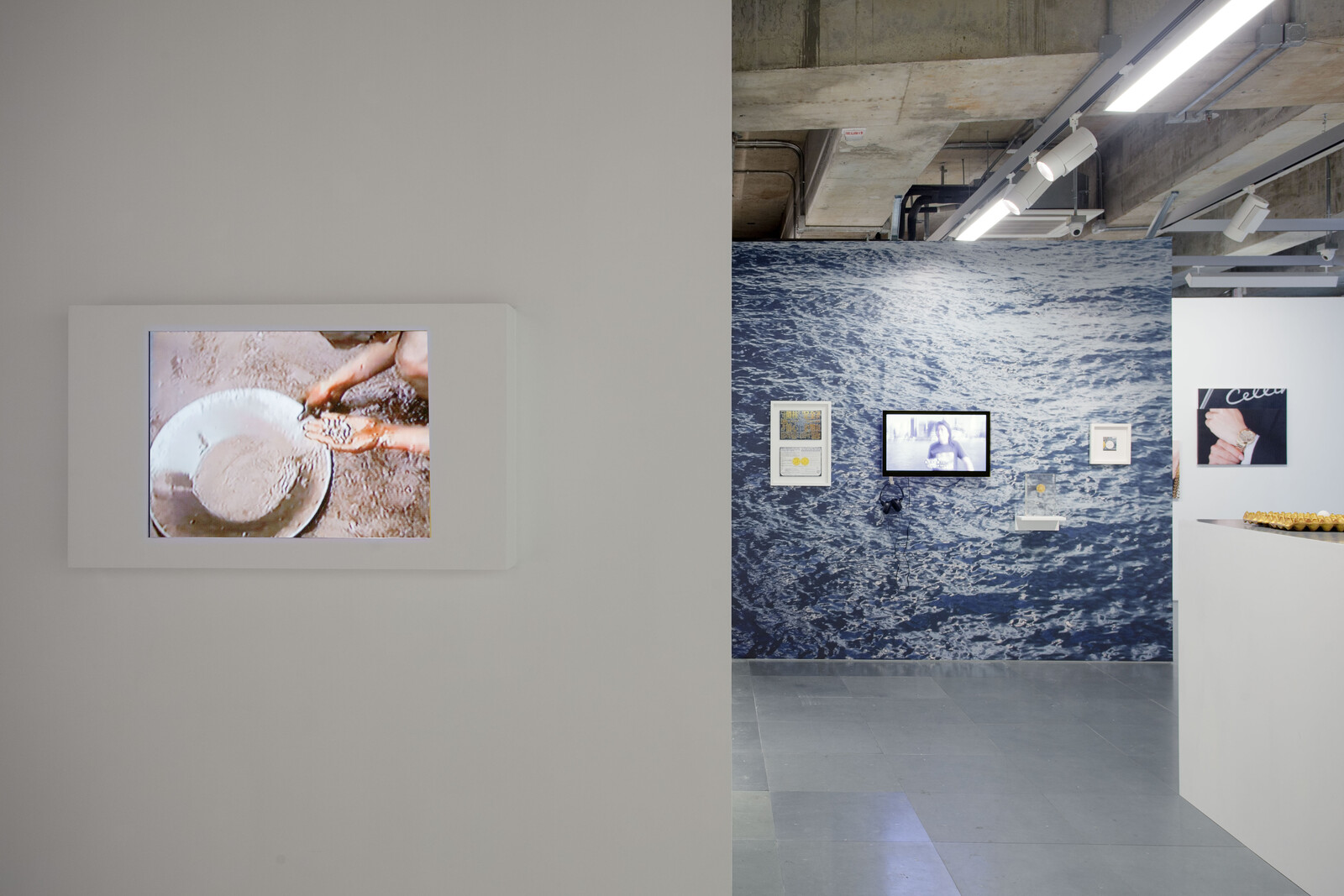
In an age of financialization, notions of value are increasingly abstracted, constructed from algorithmic equations as opposed to distinct processes or materials. As Franco “Bifo” Berardi writes succinctly of our era: “monetary value produces more monetary value without being realized through the production of goods.” This observation indicates a departure from the objects through which capital has traditionally been conducted.
In the heart of Hong Kong’s business sector, where the wheels of multinational corporations churn alongside luxury boutiques, Edouard Malingue Gallery’s exhibition “Clamour Can Melt Gold” looks to gold, a medium that is at once anachronistic and foundational to current conceptions of value. Taking its title from a Chinese proverb popularized by the country’s forefather Sun Yat-sen, “Clamour Can Melt Gold” suggests an aspirational fervor that speaks to the power of the masses against great obstacles and also, perhaps inadvertently, to the mutability and porousness of that which has an established value. Following this sentiment, in the exhibition, gold is attended to as both a highly coveted, symbolic, and fetishized object as well as a tool of exploitation and power.
Easing the viewer into the subject, Hong Kong artist Sarah Lai’s Styling Index (2015) examines the visual rhetoric of ubiquitous high-end jewelry …